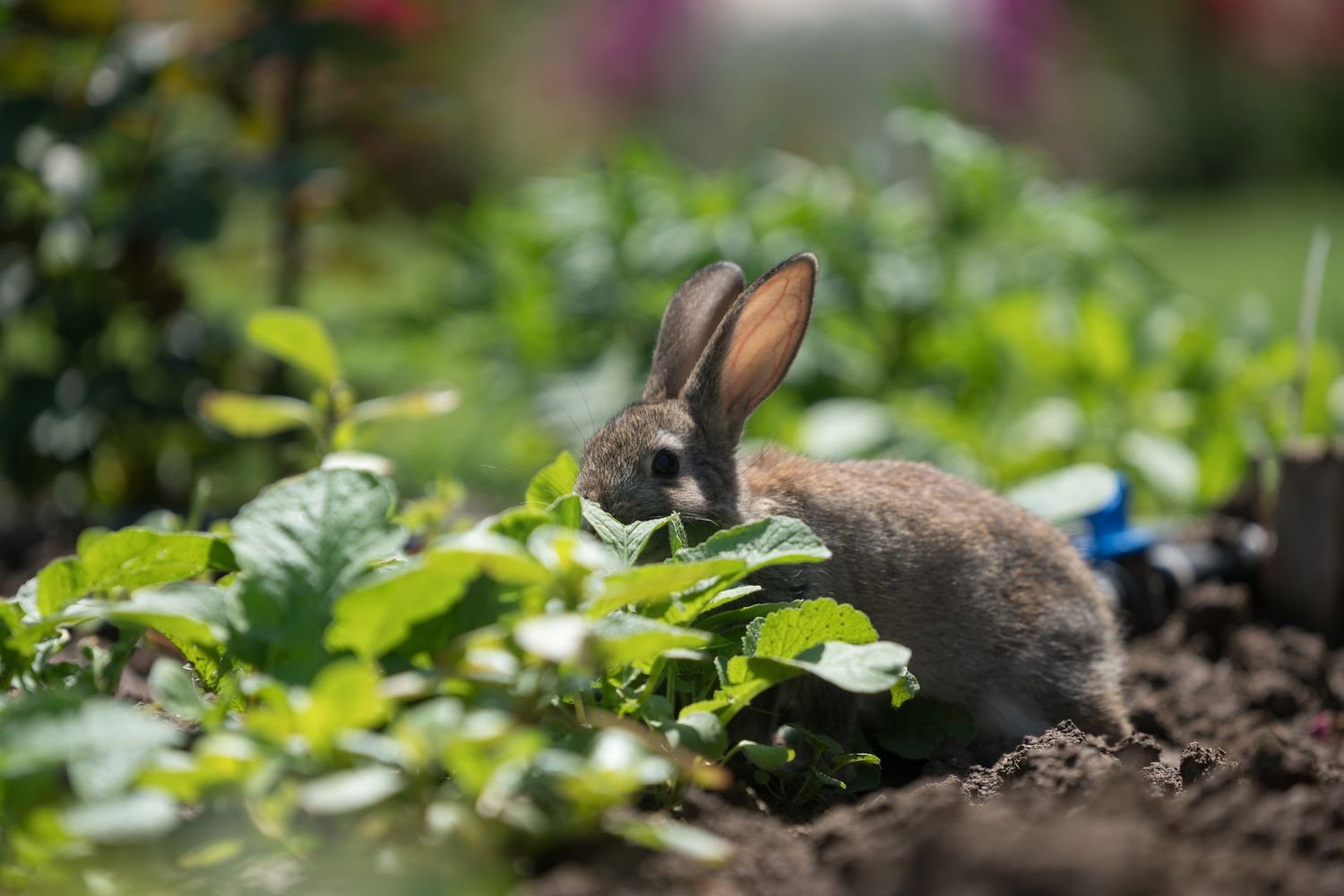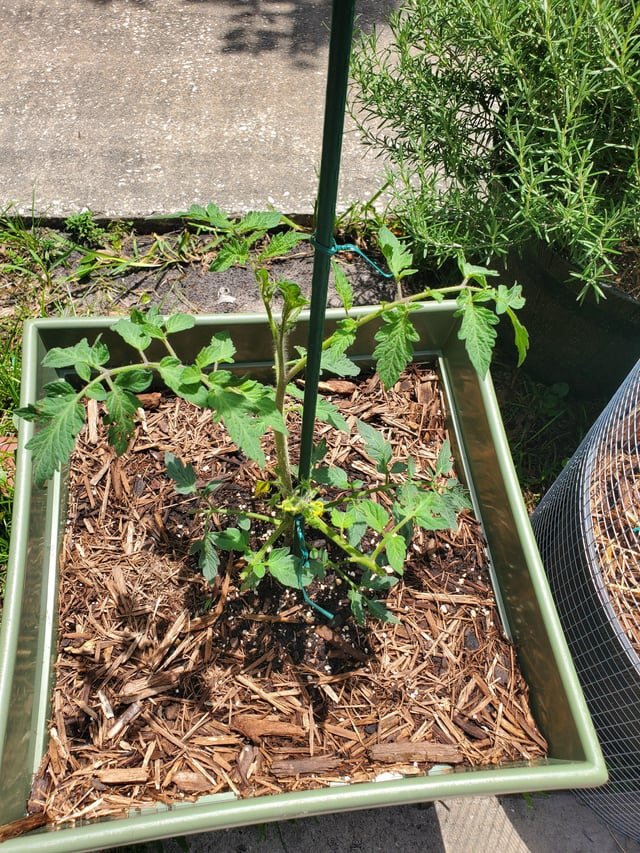
My Tomato Plant Was Fine Yesterday… Then the Rabbits Came
It was early June, and things were finally looking good in the garden. My tomato plants had that perfect deep green color, strong stems, and fresh new growth coming in fast. I’d just finished bragging to a neighbor that this was going to be my best season yet.
The next morning, I stepped outside, coffee in hand, and froze. The top half of one of my tomato plants was gone.Clean bite marks. Fresh droppings. That’s when I knew: rabbits.
I had heard they might nibble, but I figured they’d go for clover, weeds, or leftover lettuce scraps first. Apparently not. My tomato patch had become their salad bar, and I had no idea how much damage they could actually do. So I dug in, and here’s everything I wish I knew the day before the rabbits showed up.
Do Rabbits Eat Tomato Plants?
Yep. Rabbits absolutely eat tomato plants. And not just the fruit—they’ll munch the leaves, chew stems, and even gnaw on tender vines if they’re hungry enough or curious enough.
From what I’ve seen (and had to replant), they go for:
- Young plants with fresh, tender growth
- Low-hanging leaves near the edge of the bed
- Any plant that isn’t protected or fenced off
Rabbits are especially attracted to new tomato growth, which makes sense—they’re grazers. They love soft stems, leaf tips, and baby greens. I’ve noticed they tend to leave older, tougher leaves alone, but that doesn’t help when they take the top six inches of your healthiest plant overnight.
If your tomato plant is suddenly struggling and you’re not sure what’s causing it, this post on reasons your tomato plant might be sad can help you rule out a few other culprits. But if you’ve got chewed stems and bunny evidence nearby, it’s probably not a coincidence.

What Parts of the Tomato Plant Do Rabbits Eat?
Rabbits aren’t picky eaters when they find something soft and green in your garden. They’ll typically go for:
- Tender new leaves (especially the tops of younger plants)
- Thin stems they can bite through easily
- Baby fruit if it’s close to the ground and still green
- Fresh sprouts coming up after pruning
I once caught a rabbit standing on a low grow bag, just chowing down on the growing tip of a cherry tomato plant like it was a gourmet snack. I couldn’t be mad—it was kind of impressive. But it was also the end of that plant’s best growth run.
If you’ve ever found a tomato half-chewed open with seeds showing, it might also lead you to wonder how tomato seeds sprout inside the tomato itself. Sometimes the damage gives you insight into how nature works—even if it costs you a few tomatoes.
Are Tomato Plants Harmful to Rabbits?
Here’s where it gets tricky. Tomato leaves and stems are mildly toxic, even to rabbits. They contain tomatine, an alkaloid that can upset a rabbit’s digestive system—especially if they eat a lot of it.
That said, most wild rabbits don’t hang out long enough to get sick. They nibble a few leaves and move on. It’s kind of like they know when to stop. Domesticated rabbits, on the other hand, might not have the same instincts and could be more at risk if they eat large amounts, especially in confinement.
I wouldn’t count on the toxin to deter them, though. Every year I see plenty of healthy wild rabbits treating my tomato beds like an open buffet—so clearly it doesn’t bother them much in small doses. But if you raise rabbits yourself, it’s worth keeping tomato plants out of their pen or run.

Signs That Rabbits Are Eating Your Tomato Plants
If you’ve ever walked into your garden and thought, “Something’s not right here…” — you might be dealing with rabbits. Here’s how I’ve learned to spot their calling cards:
- Clean, angled cuts on stems or leaves — unlike deer, which tear and shred, rabbits leave precise bite marks
- Missing top leaves or growth tips — especially overnight
- Little round droppings near the base of the plants
- Flattened soil or mulch trails — rabbits often create little pathways from the brush to your garden
- Chewed fruit near the ground — sometimes they take a bite and leave the rest, just to annoy you
It usually starts with one plant. Then they come back the next night. By the time you realize it’s them, they’ve already got a routine and a favorite route into your garden.
If your plants look like they’re declining and you’re not sure it’s rabbits yet, check out this post on tomato plant sadness to help rule out other issues. But when you see those perfect bite marks… it’s bunny business.
How to Keep Rabbits Away from Tomato Plants
Once I figured out rabbits were the problem, I tried everything. Some things worked. Some things just made my garden smell like vinegar for a week.
Here’s what’s actually helped:
1. Fence with buried edges:
Rabbits are better diggers than you’d think. A basic chicken wire fence won’t cut it unless you bury the bottom 6 inchesor bend it outward at the base to stop tunneling.
2. Raised beds:
Ever since I started using raised metal garden beds, the nibbling basically stopped. Most rabbits don’t bother climbing once they realize the buffet isn’t within hopping distance.
3. Remove nearby hiding spots:
Tall grass, woodpiles, and low bushes around your garden give rabbits cover. Clean up the perimeter and you’ll make your garden less appealing.
4. Motion-activated sprinklers:
These are hilarious and effective. Nothing clears a rabbit faster than a surprise splash.

The Best Rabbit Repellent for Tomato Plants
I’ve tested a bunch of repellents over the years—sprays, granules, weird garlic mixtures—and here’s what actually worked.
Top pick: This repellent right here
It’s labeled for deer, but also repels rabbits. It’s made with natural ingredients, and while it smells strong when you apply it, that fades for humans fast—but not for animals.
It works best when applied:
- Every 7–10 days (especially after rain)
- Around the base of the plant and along garden edges
- In combination with physical barriers for maximum protection
I used to think repellents were a waste of money until I gave this one a real try. Now I won’t plant tomatoes without spraying the perimeter at least once a week during peak rabbit season.
Natural Ways to Repel Rabbits Without Chemicals
If you’d rather not spray anything (even natural), there are a few homemade tricks that can help keep rabbits out without turning your garden into a science experiment.
Here’s what’s worked for me and others I know:
- Plant garlic, basil, or marigolds nearby – rabbits usually skip these
- Scatter Irish Spring soap shavings around beds
- Sprinkle blood meal or bone meal near tomato plants (also great for soil!)
- Drop a bit of human hair from your hairbrush around the garden edges
- Make a vinegar and hot pepper spray – spritz around the ground, not directly on the tomato plant
And if you’re dealing with bugs too, this post on what to spray on tomato plants when bugs start chewing pairs well with rabbit control for an all-around defense plan.

Can Rabbits Destroy a Whole Tomato Plant?
Unfortunately, yes—rabbits can absolutely wipe out an entire tomato plant. I’ve seen it happen in a single night. If the plant is young and still getting established, it doesn’t take much. A few bites from a hungry bunny and that plant may never recover.
Even mature tomato plants aren’t totally safe. If a rabbit chews through the main stem or bites off too many of the top leaves, the plant will go into shock. I had one Brandywine that was thriving until a rabbit chewed the growth tip clean off. It survived—but the harvest was half what it should’ve been.
So if you think one bite won’t hurt, trust me—that one bite turns into a routine. Rabbits don’t take weekends off.
What I Do Now to Keep Rabbits Out for Good
These days, I’ve got a solid system in place, and I sleep better knowing the rabbits are staying on their side of the yard. Here’s what works for me:
- I fence off my tomato patch using short chicken wire with the bottom buried
- I apply this rabbit-and-deer repellent once a week, especially after rain
- I plant rabbit-repelling herbs like basil and garlic between tomato rows
- I keep the perimeter trimmed and clear so bunnies have nowhere to hide
- And I’ve trained my dog to chase anything that hops. (She takes her job very seriously.)
Between those steps and using metal raised beds that they can’t climb into, I haven’t had a single rabbit raid in over a year. That’s a win in my book.
As an Amazon Associate we earn from qualifying purchases through some links in our articles.


